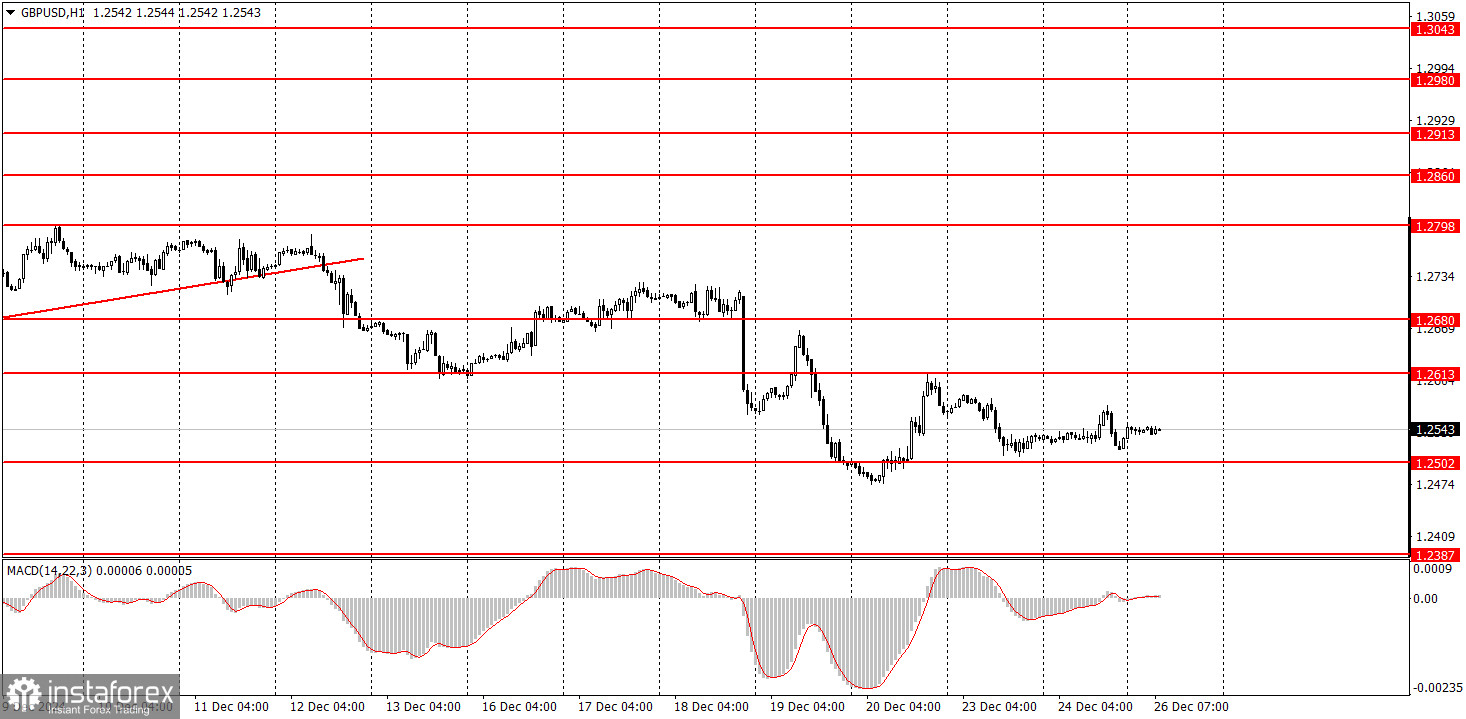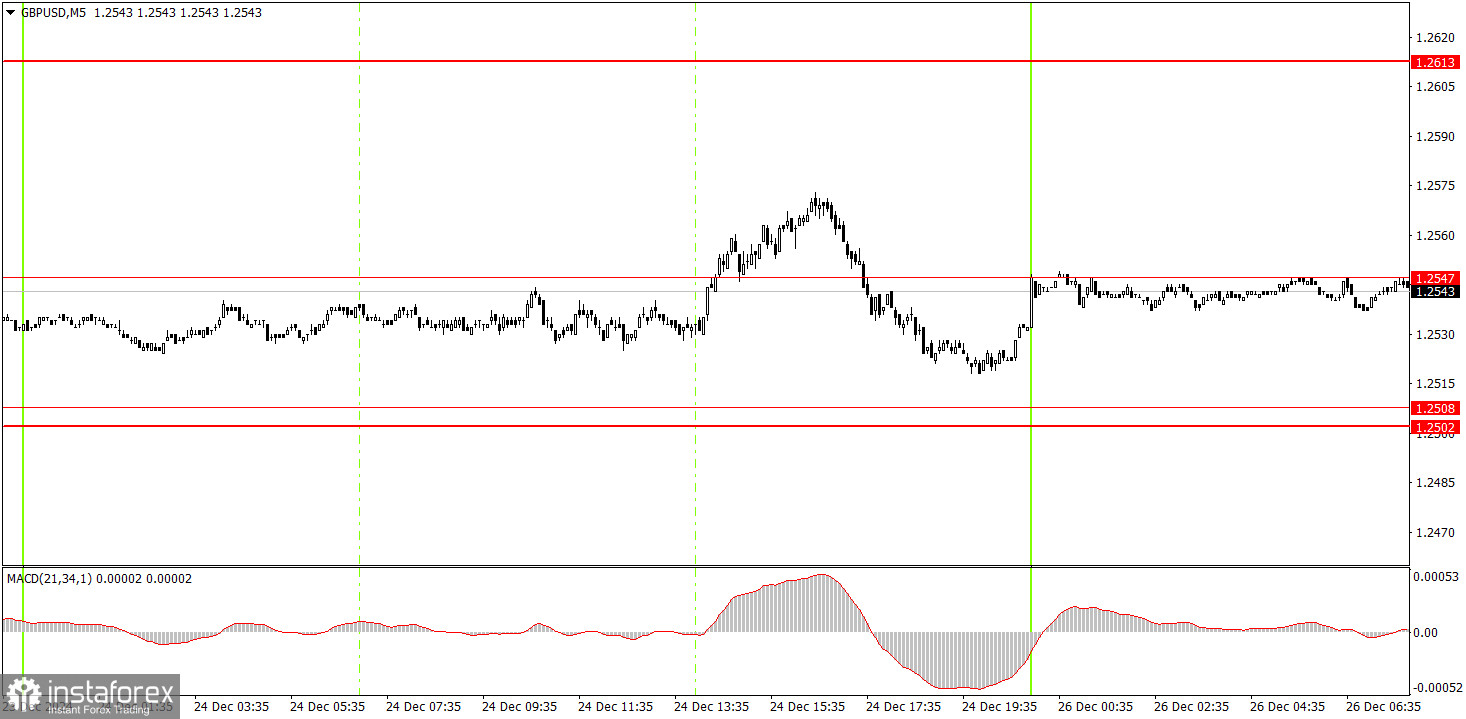Analysis of Tuesday's Trades
1H Chart of GBP/USD

On Tuesday, the GBP/USD pair traded mostly sideways with low volatility throughout the day. The Forex market was closed on Monday due to the holiday. No significant fundamental events or macroeconomic reports were scheduled for Tuesday, for the rest of the week, or in the near future. While the pair is currently showing a bearish sentiment, predicting its movement through the end of the year is nearly impossible. The market is currently in a flat condition, but sharp price swings could occur in this "thin" market.
5M Chart of GBP/USD

On the 5-minute timeframe on Tuesday, two trading signals were generated. During the U.S. trading session, the price unexpectedly began to rise, only to drop back a few hours later. The exact cause of these movements is unclear; it was likely influenced by the actions of major players in a thin market. Despite the price crossing the 1.2547 level twice, it was probably not advisable to try trading these signals, as they occurred just hours before the market closed.
Trading Strategy for Thursday:
On the hourly timeframe, the GBP/USD pair has completed its upward correction. In the medium term, we fully support the sustained decline of the pound, as we believe this is the most logical scenario. However, it's important to note that the British pound shows significant resistance against the U.S. dollar. Therefore, while we expect further decline, trading decisions should be based on technical signals. The outcomes of the Bank of England and Federal Reserve meetings strongly support the continuation of the bearish trend.
On Thursday, the GBP/USD pair may trade somewhat randomly or remain in a flat pattern with low volatility.
On the 5-minute timeframe, the following trading levels are relevant: 1.2387, 1.2445, 1.2502–1.2508, 1.2547, 1.2633, 1.2680–1.2685, 1.2723, 1.2791–1.2798, 1.2848–1.2860, 1.2913, and 1.2980–1.2993. For Thursday, there are no significant events scheduled in the UK or the U.S. that could impact trader sentiment or encourage active trading.
Core Trading System Rules:
- Signal Strength: The shorter the time it takes for a signal to form (a rebound or breakout), the stronger the signal.
- False Signals: If two or more trades near a level result in false signals, subsequent signals from that level should be ignored.
- Flat Markets: In flat conditions, pairs may generate many false signals or none at all. It's better to stop trading at the first signs of a flat market.
- Trading Hours: Open trades between the start of the European session and the middle of the US session, then manually close all trades.
- MACD Signals: On the hourly timeframe, trade MACD signals only during periods of good volatility and a clear trend confirmed by trendlines or trend channels.
- Close Levels: If two levels are too close (5–20 pips apart), treat them as a support or resistance zone.
- Stop Loss: Set a Stop Loss to breakeven after the price moves 20 pips in the desired direction.
Key Chart Elements:
Support and Resistance Levels: These are target levels for opening or closing positions and can also serve as points for placing Take Profit orders.
Red Lines: Channels or trendlines indicating the current trend and the preferred direction for trading.
MACD Indicator (14,22,3): A histogram and signal line used as a supplementary source of trading signals.
Important Events and Reports: Found in the economic calendar, these can heavily influence price movements. Exercise caution or exit the market during their release to avoid sharp reversals.
Forex trading beginners should remember that not every trade will be profitable. Developing a clear strategy and practicing proper money management are essential for long-term trading success.





















